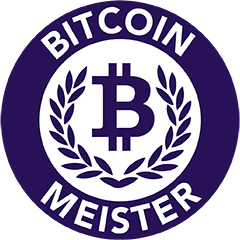What are STO?
In the Universe of Fundraising, in the world of Cryptocurrencies, it is more than necessary to differentiate 3 Types of Fundraising:
- ICO – Initial Coin Offering
- STO – Security Token Offering
- IEO – Initial Exchange Offering
In this article, let’s focus on what STO (Security Token Offering) are, and compare them to ICO (Initial Coin Offering)

To simplify the comparison, here is how we can differentiate them
ICOs:
- Decentralized Application (dApp) or Projects present on a Public Blockchain
- Fundraising for ICOs is essential to the functioning of the network (based on a Blockchain)
- Utility Tokens are not created to be an investment
- Few or no regulations
- ICOs allow the purchase of ‘Utility Tokens’ that only allow the use of services that will be developed after the fundraising (discounts, premium features, advantages on the services offered ..)
STOs:
- Any type of business – Using Blockchain and Smart Contracts for the automation of transactions
- Fundraising is not essential in the operation of the network
- STO Tokens provide legal, financial and other rights.
- They correspond to a share of the capital of the company, or investment fund .
- Very regulated, as for companies that organize IPO to sell shares/part of the company to raise funds
Or, even more simply:
- ICOs are Chaos, no regulation, no guarantee of success (with nearly 98% of projects not succeeding, or not living more than a few weeks/months)
- STOs are Credibility, because they respect a strict set of rules allowing to establish (or restore) a certain credibility.
Concretely it is easier to launch an ICO, than to launch a STO, but as far as investors are concerned, institutional or private, they will have more confidence in a STO, because it provides much more guarantee, security and profit on the short, medium and long term.
STOs, ‘Tokenized Financial Assets‘ on a Blockchain, appeared and became popular after the failure of ICOs (too many projects turned out to be scams, or never saw the light of day, and from a legal point of view, if a project owner decides to leave with 100% of the funds raised at the end of the ICO, the investors are all losers, and the only winner is the owner of the Project)
In Security Token, there is the word ‘Security’, and what does it mean?
These ‘Financial Securities‘ are ‘Financial Tokens similar to financial instruments‘. The SEC in the United States, uses (not systematically) the ‘Howey Test‘ (established in 1946 by the Supreme Court of the United States) to define if a Token is a ‘Security’ or not.
To pass this test and become a ‘Security’, a Token must meet 4 defined criteria, which are:
- Be an investment of money
- The investment is in a common enterprise (in which investors use their funds to finance a project)
- With the expectation of profit
- For the purpose of receiving profits only from the efforts of others.

Security Tokens can take many forms or functions:
- Shares – a security conferring shares in the company’s capital
- Bonds
- Management rights – Voting rights
- Dividends
But they are not limited only to companies, these Tokens can also be related to Real Estate, to Artistic Works ….
The main advantages of Security Tokens are:
- Very strict regulations
- Projects for STOs are generally much more reliable and developed than those for ICOs
- STO’s know a significant growth (while the ICO market is in decline)
- Security Tokens are traded on regulated platforms
- They are likely to be the next big thing in traditional finance
- Security Tokens are less subject to market manipulation or speculation
But they also have drawbacks:
- It takes a lot of time and money to meet the requirements for regulatory approvals
- STOs can be limited to qualified investors (in the US), and sometimes require large amounts of money
- STOs can also have their own ‘White List’ limiting the number of investors and especially choosing them
Globally, anyone can participate in STOs, but unlike ICOs, for which it is just necessary to own some Cryptocurrencies, for STOs, it is essential to complete a KYC (Know Your Customer), and possibly an AML (Anti-Money Laundering)
Some small information and figures about STO:
- The very first STO took place on April 17, 2017, launched by Blockchain Capital, which raised $10 Million in a few hours
Since then, 124 STOs are listed (data published in 2020), for a total of $953,088,769 Raised, with a dominance of the Financial Sector market at 77% of projects (followed by Real Estate 11% and Blockchain 4%). More than half of the funds raised were in North America ($579.8 million)
Of which the biggest fundraising is attributed to tZERO with $134 Million reached (out of the $250 Million Target Amount), followed by Proxima Media which managed to reach its Target Amount of $100 Million, the next 3 are :
- Bolton Coin: $67.83 Million (Target $100 Million)
- Nexo: $52.5 Million (Target $52.5 Million)
- Jinbi: $47.5 Million (Target $12.5 Million)
A very large majority of the STOs were made on the Ethereum Blockchain, 94% (1% NEO, 1% Stellar, 4% others)
Last but not least! Only invest what you can afford to lose, the price of Cryptocurrencies is extremely volatile so much so that you can gain a lot in a short time, but also lose everything even faster. Set limits for yourself that you don’t want to exceed, for your own financial security.
See you soon
Christophe WILHELM
© Bitcoin Meister




Post Comment
You must be logged in to post a comment.